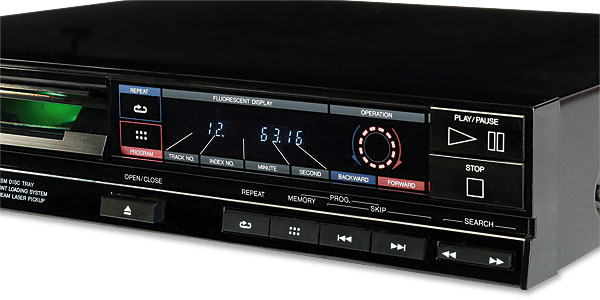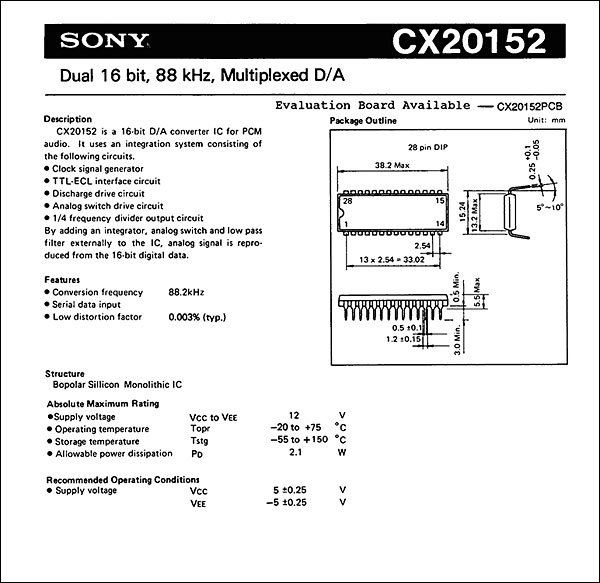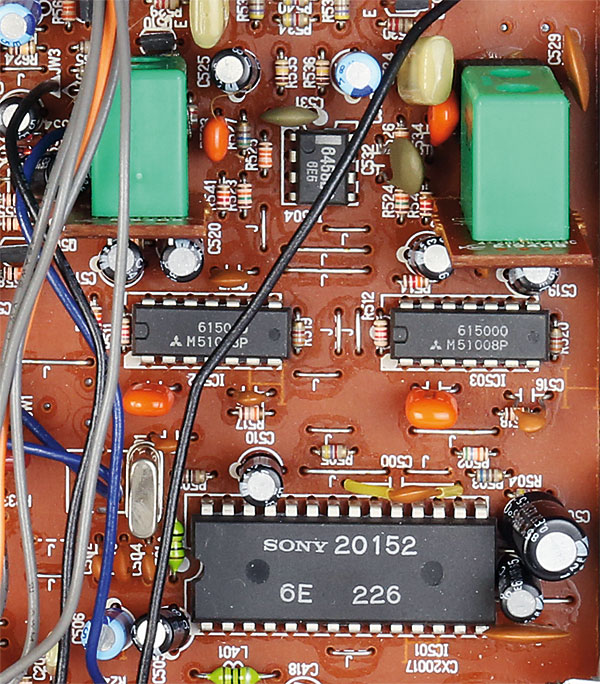Sanyo CP 08 CD player

 An unashamedly budget machine, this late '80s CD player had a mechanical trick up its sleeve that saw it take the fight to its rivals on price. But how will it shape-up today?
An unashamedly budget machine, this late '80s CD player had a mechanical trick up its sleeve that saw it take the fight to its rivals on price. But how will it shape-up today?
It has been ten years, shy of a month, since a Sanyo product last appeared in the HFN Vintage Review pages. This was the Fisher AD 800 [HFN Apr '13], the company's first ever CD player, which was marketed in the UK under the firm's specialist hi-fi and video brand.
Despite Sanyo' size and obvious technical expertise in other areas, it didn't produce much in the way of truly memorable hi-fi, although the brand name always had a presence in the market. Many will remember its sturdy music centres and well engineered entry-level stack systems from the 1970s and early 1980s. But unlike Sony, Technics and B&O, etc, whose audio components ranged from 'starter' all the way up to 'premium', Sanyo offered little in the way of an upgrade path.
Future's Bright
The CP 08 of 1987 marked a step-change for the company. Although self contained and able to be used as part of any hi-fi system, it could also slot neatly into a choice of Sanyo's matching 335mm-wide 'midi' set-ups. Visual unity was provided by the extensive use of soft-touch 'logic' keys, digital displays and brightly coloured pinstripe graphics across all the units, giving a modern and discreetly futuristic look. It was still considered premature to sell a CD player that was tied to a particular supporting system, however, so the CP 08 retained its own power supply and came with standard output connectors and a full set of controls.

The Compact Disc reinvigorated Japan's export-orientated hi-fi industry in the middle part of the 1980s. Suddenly it became possible to produce a really high performing source component which, unlike a typical top-end turntable, was small and easy to package in a consumer-friendly way. The public couldn't get enough of them, and enthusiastically bought virtually every CD player the industry could produce. The majority of consumers preferred to buy sets of matching equipment and so new CD players led to the purchase of new tuners, amplifiers and cassette decks. Sanyo, along with every Japanese consumer electronics manufacturer, was keen to get on board.
Culture Clash
Like the Philips CD380 [HFN Jan '23], the CP 08 was clearly a budget machine. However, the difference in industrial culture between Europe and Japan meant the challenge of manufacturing such a technically advanced product at an attractively low price was tackled in a different way. Sanyo was not under the same pressure as Philips to reduce the number of hand-assembly operations, nor was it so constrained that it had to limit the number of small components used in the design. Something did have to give though, and in the case of the CP 08 it was one of the motors. Usually a CD player of this era has three motors: one to turn the disc, one to move the laser along as the beam follows the spiral track of tiny pits, and one to open and close the drawer – by this stage the public were demanding slimline, front-loading machines.

Sled As A Dodo
By a feat of considerable mechanical ingenuity Sanyo managed to eliminate the sled motor in the CP 08, which is the one that roughly positions the laser. Its role was taken by the motor that primarily opened and closed the drawer, the changeover being performed by an intricate set of gears and levers. For this reason the player's open/close key had a distinctly 'mechanical' feel, for it was the action of this which cocked the mechanism to change its function. Whether or not this distinctly Heath Robinson arrangement brought down costs sufficiently to have been worth concocting in the first place is unclear, but it is certainly a delightful example of lateral thinking, and enlivens an otherwise fairly standard product.
Creativity was clearly blossoming in Sanyo's CD department at the time. Only a year previously it had produced the quirky CP 10 portable with lid-mounted LCD panel and built-in AC power unit. Sadly this latter feature had relegated the battery pack (filled with Sanyo's own Ni-Cd 'Cadnica' batteries) to an external block almost as large and heavy as the player itself. Other Sanyo mechanical innovations of the era included the VTC-5000 video recorder, which used the Betamax format. This machine did not leave the tape laced around the fragile video heads during fast forward and rewind, and gained an enviable reputation for durability as a result of this.

The CP 08's production engineering followed on from the Fisher AD 800. The mechanical and optical parts were made in-house by Sanyo but the digital audio processing electronics relied heavily on specialist integrated circuits from Sony. By this stage in the development of Compact Disc the technology had become simpler than it was at the start, the CX23035 CD decoder, for example, being almost a 'single chip' solution from the laser to the DAC. Indeed, this was widely employed across the industry for players of this type.
The DAC also came from Sony, the single-channel CX20152 [see below] being a descendant of the CX20017 first used in the company's CDP-101 [HFN Jan '12]. This 16-bit device was time shared between the channels in the traditional Japanese fashion and was followed by sharp analogue filters to block out spurious signals from the digital circuits [see PM's Lab Report, p125].
Clearly there was still a little money left in the pot at the end of all this since the fascia was able to sport a ¼in headphone socket with its own volume control, a disc-viewing prism similar to that found on the Technics SL-P3 [HFN Sep '22] and a circle of LEDs. These showed a rotating pattern when the disc was playing, complementing a similar motif found on the front of some of the company's matching cassette decks.

Miniature Marvel
Those who have never seen a CP 08 'in the flesh' may imagine it to be no more appealing than other budget players of the era. Not so, as there's something quite attractive about the player's compactness and the way all the controls and legends are slightly smaller than might otherwise be the case. The CP 08 isn't 'toy-like' but, instead, gives the impression of being a precision miniature.
Furthermore, the end-of-tray disc prism is also something of a joy. True, it's not quite as effective as Technics' viewing lens from the period, but it has a script set into it which says 'Digital Audio'. The optics are arranged so that the prism shows either this or the disc, the change happening over a very slight adjustment in viewing angle. This 'sleight of sight' is compelling!
Much of the fascia detail could be dismissed as unnecessary and chintzy, but if it's the '80s you want then this is the look that goes with it. The spinning wheel of LEDs is, of course, completely pointless (even though it runs backwards during reverse search), but nothing seems to have been sacrificed to make way for it.
























































